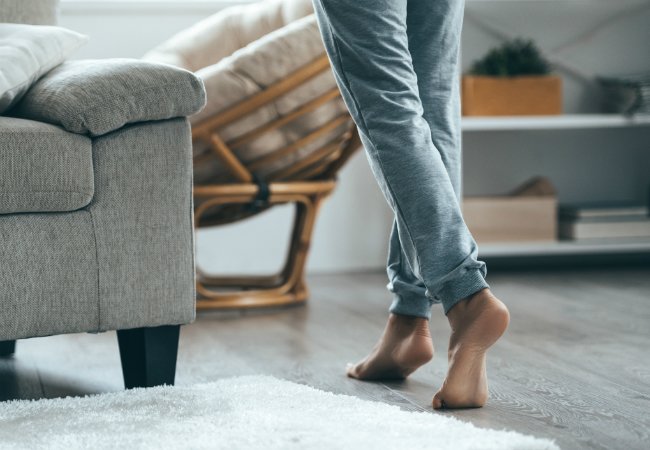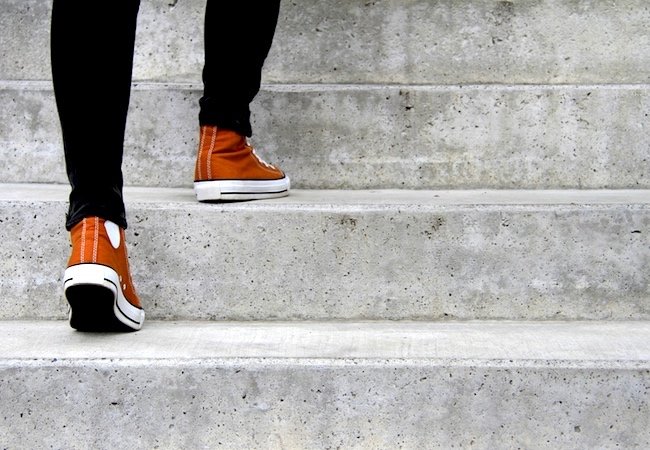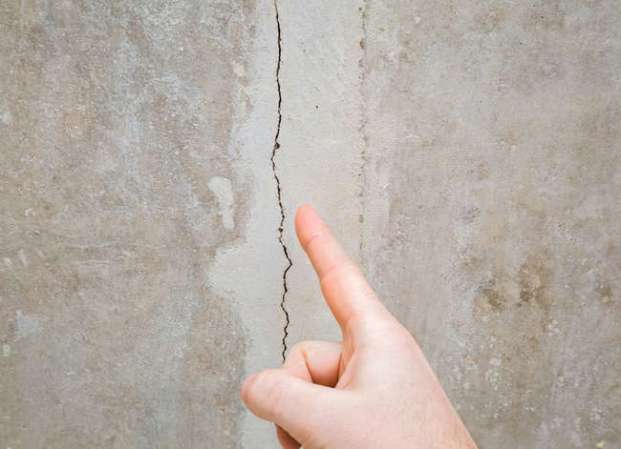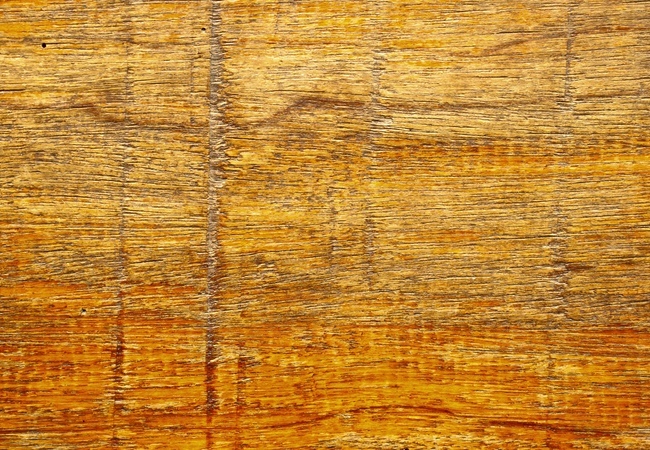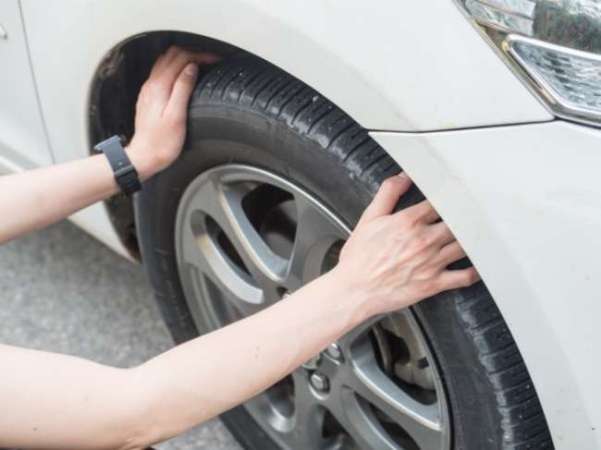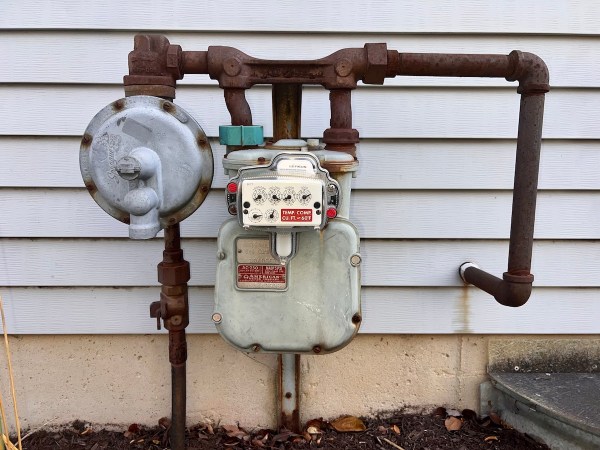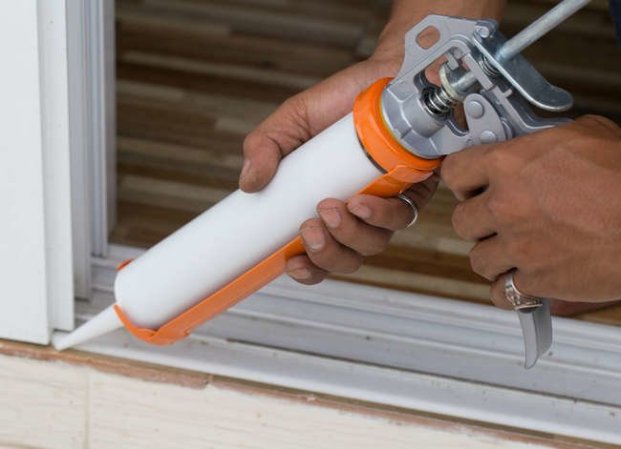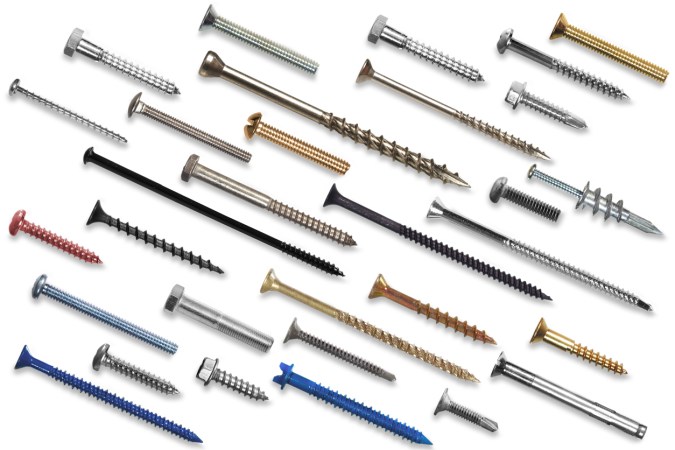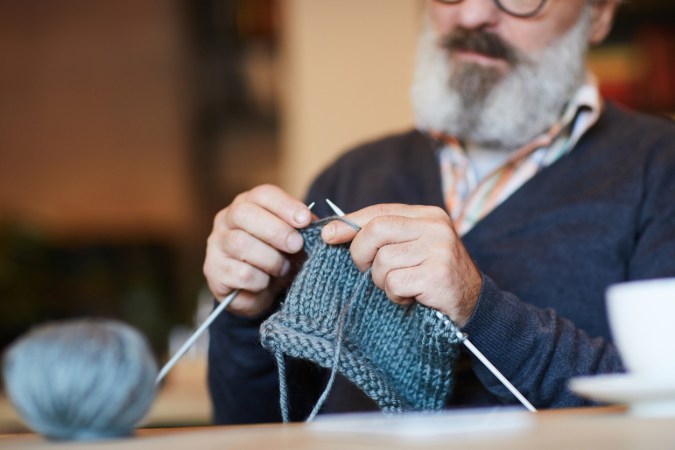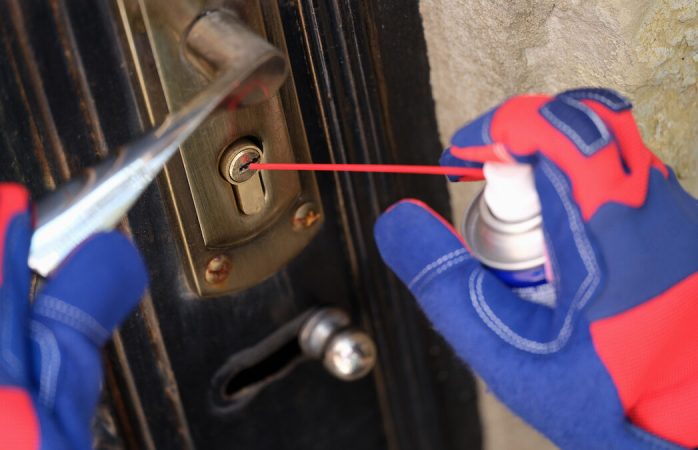We may earn revenue from the products available on this page and participate in affiliate programs. Learn More ›
When you’re dead asleep and someone in your family sneaks downstairs for a late-night snack, the loud groan of a stair is jarring and annoying. Squeaky stairs are caused by wear and tear on the wooden staircase components that cause one wooden section to rub against another (or against a metal nail) and are not usually a sign of a serious problem with your home, but boy, they can be bothersome. It’s best to fix the creak before it gets worse.
Parts of a Staircase
Most reasonably handy folks can tackle a squeaking stair on their own. Before getting started, however, it helps to know the correct terminology for staircase components.
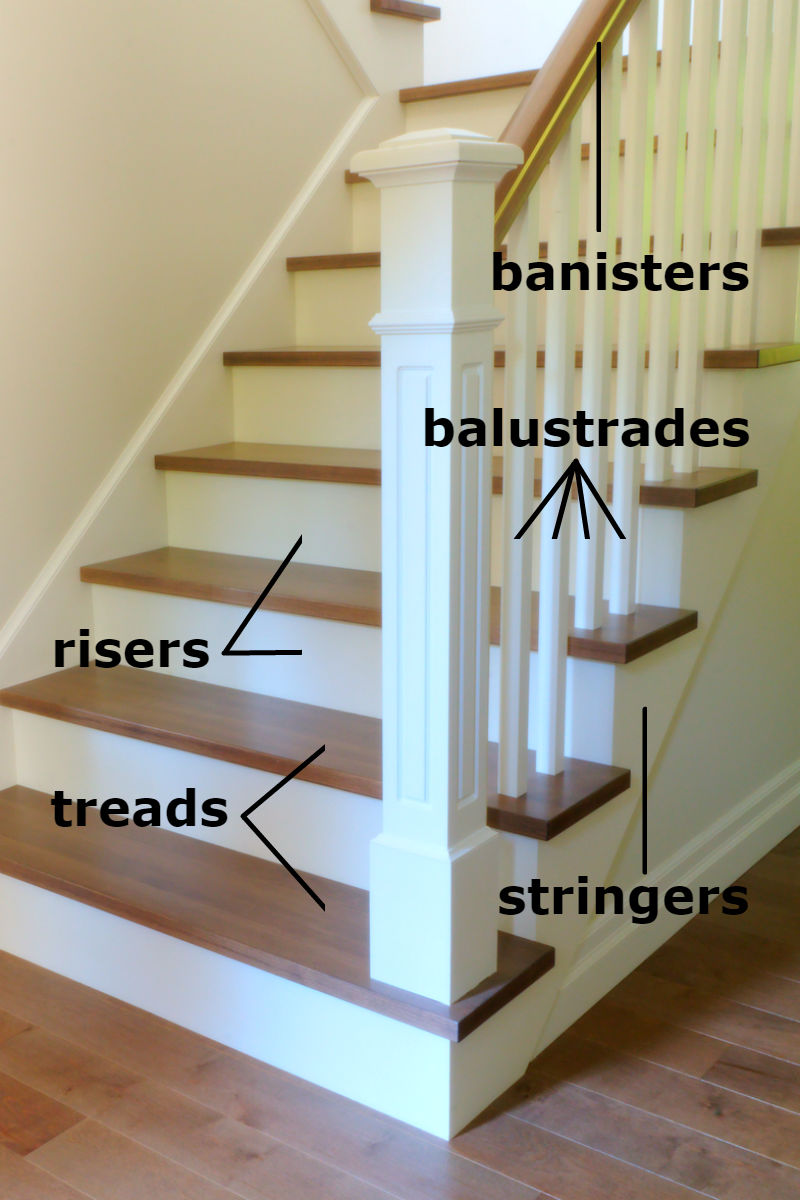
- Treads are the horizontal surfaces onto which your feet step.
- Risers are the vertical surfaces in between the treads.
- Stringers are the sawtooth-shaped boards running up the sides of the risers and treads that keep the staircase together and provide support. Stringers on interior staircases are sometimes hidden inside the drywall.
- Banisters are the handrails running the length of the staircase.
- Balustrades are the posts that support the banisters.
- Nose is the part of the tread that hangs over the riser.
How to Determine Which Part of Your Stair Is Squeaking
- Walk up and down the staircase, taking note of any squeaky steps.
- Mark the culprits with a piece of tape or a Post-it note.
- Stand in the center of each noisy step.
- Gently rock from side to side and then forwards and backwards to determine whether the squeak is coming from the back, the side, or the front of the tread. As a rough rule of thumb, squeaks from the front of the tread indicate it has come loose from its riser, while a squeak from the back or the side of the tread means it’s loose at the stringer.
- Once you’ve determined where the noise is coming from, pursue one of these ways of stopping it—or at least quieting it down.
How to Quiet Noisy Stairs
1. Use lubricant to quiet the creak.
One of the easiest ways to muffle a creak coming from the back or sides of the tread is by filling the crack between the tread and the riser above it. While this won’t actually stop the two wooden pieces from rubbing together, the powder removes friction, thus stopping the noise.
- Select a lubricant like powdered graphite or talcum powder. Don’t use an oil-based product, which can warp wood, turn sticky with dust, or leave things slippery if overused.
- Wedge a piece of paper against the back of the tread.
- Pour a little powder onto the paper across the entire width of the stair.
- Use your finger, a tightly twisted piece of cloth, or a stiff paintbrush to work the powder as deeply as possible into the crack between the tread and the riser.
2. Screw down the treads.
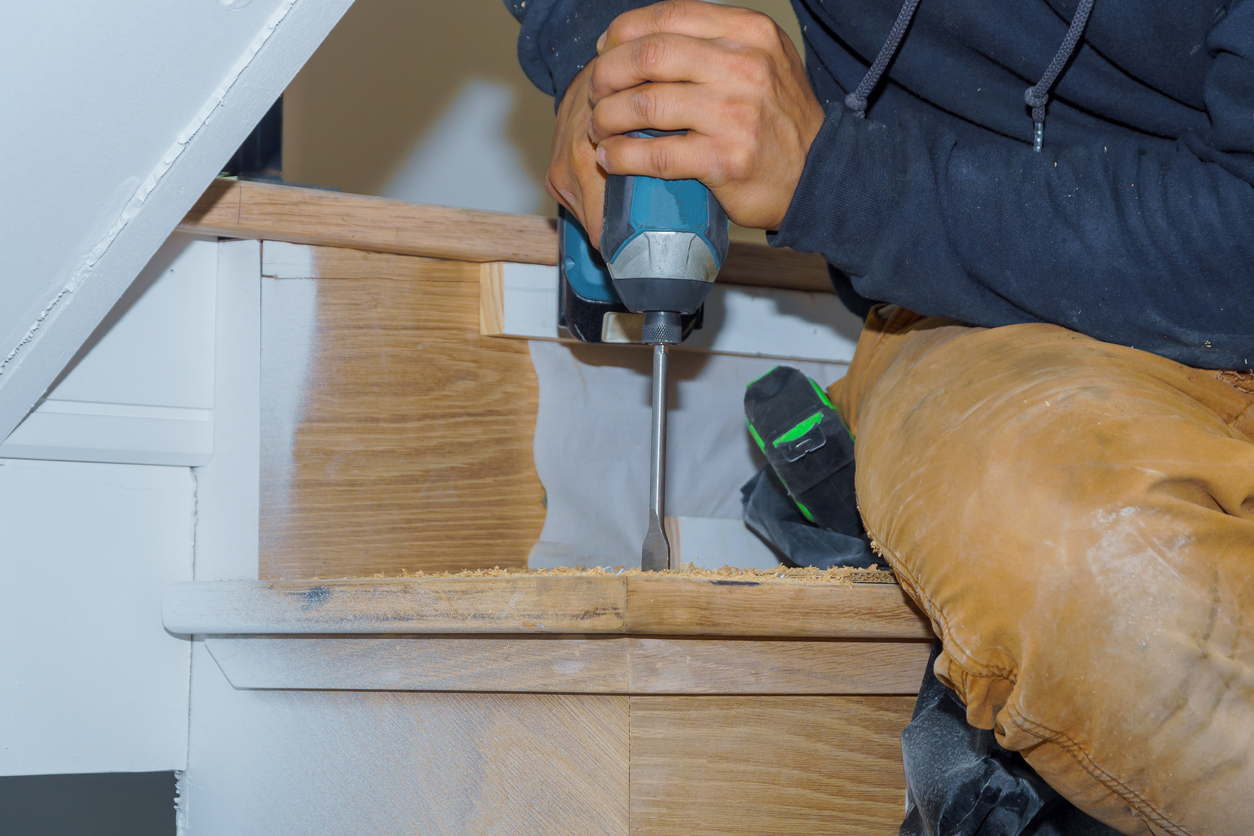
If your stair is squeaking at the front, use screws to tighten the fitting between the tread and the riser with a few screws.
- Drill three evenly spaced pilot holes across the front of the tread where it lines up with its riser.
- Drill in three #8 screws, making sure to sink them slightly below the surface of the tread. Leaving a screw sticking up from the tread is a sure way to injure someone’s bare foot.
- Once the screws are in place, use a bit of appropriately colored wood filler to hide the screws and fill in the slight indentations.
3. Nail into the risers.
Compared with using a lubricant, this method is a more permanent solution to squeaks that are coming from the back or side of a tread.
- Make two small pilot holes on the side of the tread near the wall. They should be spaced about two inches apart from each other and be drilled at opposing 45-degree angles so that the nails you insert next are aimed away from each other.
- Nail the tread firmly into its stringer using 8d or 10d nails, which are 2½ to 3 inches in length.
- Repeat to create two more small pilot holes on the side of the tread near the balustrade.
- Next, drive your nails into the pilot holes, directing the nails at a 45-degree angle as described. This tightens the tread to the stringer and, by creating a slight clamp, the nails won’t easily be pulled back out over time.
- Use a hammer and a nail punch to drive the heads of the nails down so they don’t poke up above the surface of the wood.
- Cover the repaired spots with wood filler or putty to hide them.
4. Stabilize creaky stairs from underneath.
Many interior staircases don’t allow easy access to the area underneath the stairs, but if yours does, you’ll get the best results silencing your squeaks by approaching them from below.
- Source three small triangular wooden wedges known as glue blocks for each squeaky step. If you can’t find premade glue blocks at a home improvement store, make them yourself by cutting a two-inch wooden cube in half across the diagonal to create two equal triangular pieces.
- Apply wood glue to the two shorter sides of each glue block, and then firmly press the blocks into the right angle created by the meeting of the riser and the tread.
- Position one block in the center of the step and the other two at opposite edges of the step.
- Give each glue block a slight wiggle as you position it to push out any air bubbles.
- Once the blocks are glued into place, secure them further by driving two screws into each block: one screw running horizontally into the riser and the other screw running vertically into the tread.
RELATED: 17 Clever Uses for the Space Under the Stairs
5. Stop carpeted stairs from squeaking.
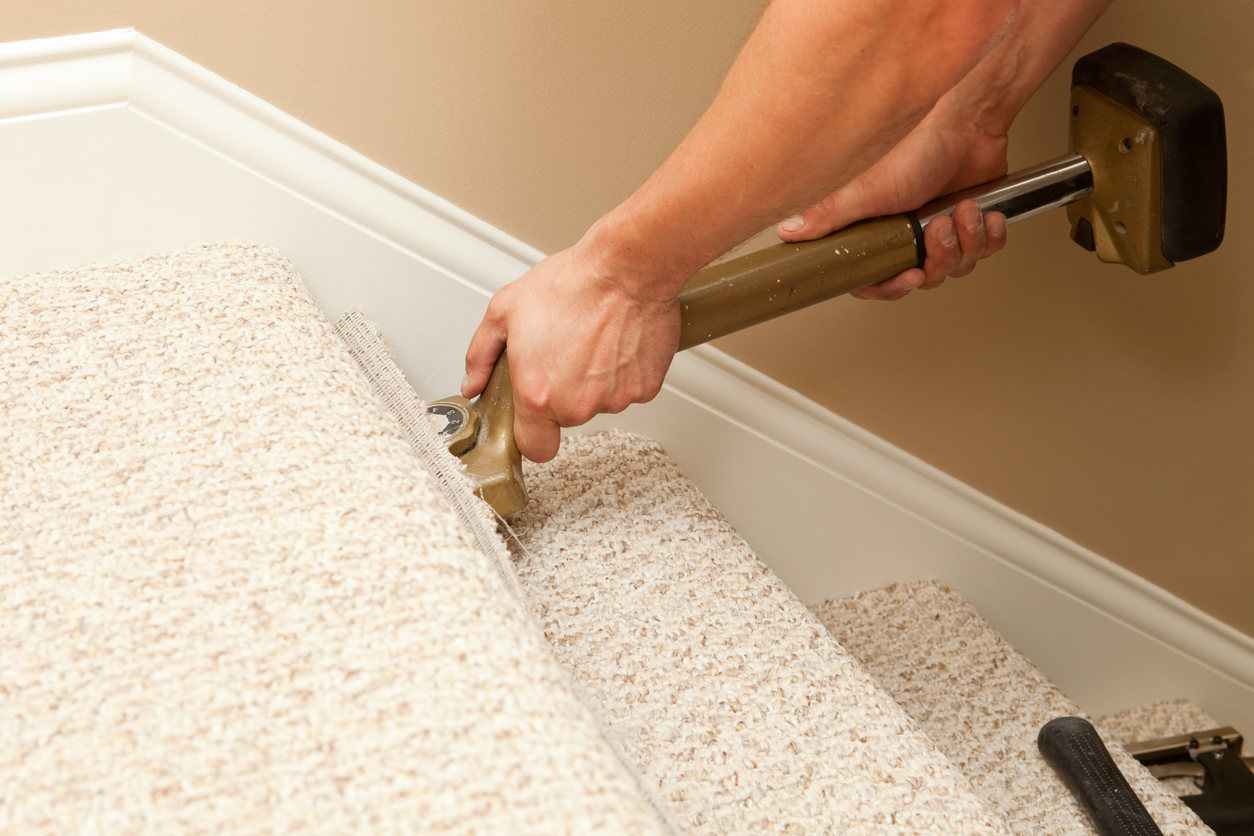
Are your stairs carpeted, but still making noise? There are a few effective ways to quiet steps that are covered.
Remove the carpet.
One option is to lift up the carpet and either push it aside to put back into place, if that’s in your DIY wheelhouse, or get rid of it and replace it with new carpet or another flooring material.
If you’re permanently removing the carpet:
- Starting at the top of the stairs, cut the carpet with a utility knife under the nose of the landing.
- Work from side to side, using vise grips to pull the carpet free from the riser.
- Cut the carpet into smaller sections as you go.
- Fix the stair using one of the methods above.
If you intend to put the carpet back in place after you’ve made the repair to the stair:
- Start at the bottom of the staircase.
- Using vise grips, lift carpet as far as you need to to reach the squeaky stair.
- Fix the stair using one of the methods above.
- Reattach the carpet.
Use a special tool for silencing the squeak on carpeted stairs.
This method involves using a drill tool specifically made for this purpose, such as the Squeak No More Kit. Use the kit to drill three screws into the front of the tread where it joins the riser as in method 2, above.
- Position the included tripod device over the spot where you want to install the screw.
- Insert the kit’s drill bit into your drill.
- Position one of the special screws at the end of the bit.
- Drive the screw through the carpet and down into the tread and riser. The head of the screw will still be sticking out of the carpet when you finish.
- Use the tripod to snap off the head of the screw, leaving the remainder safely hidden beneath the carpet where it can’t hurt your feet.
Drive screws through the carpet.
If you don’t want to remove the carpet or buy a kit, you can drive small-diameter screws through the carpet.
- Push aside the pile in the area where you intend to insert a screw.
- Drill pilot holes.
- Drive the screw into the base of the carpet, taking care to not snag any of the carpet fibers as you insert the screw.
- Sink the screw as deeply into the base of the carpet as you can so no one scrapes their feet on the head of the screw.

